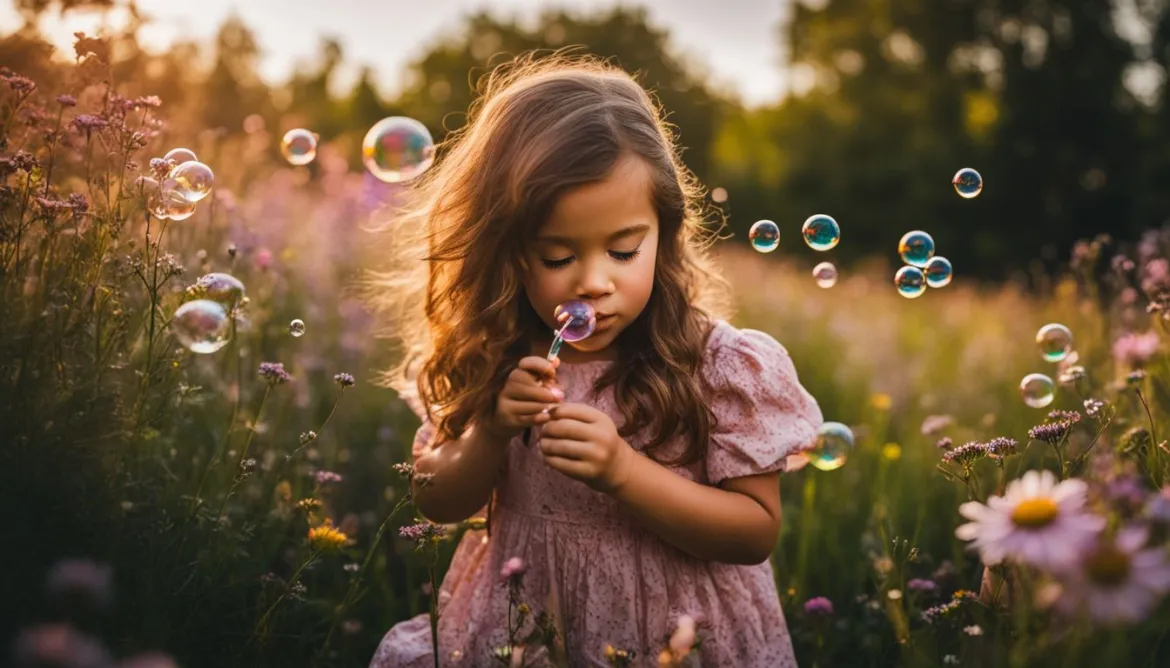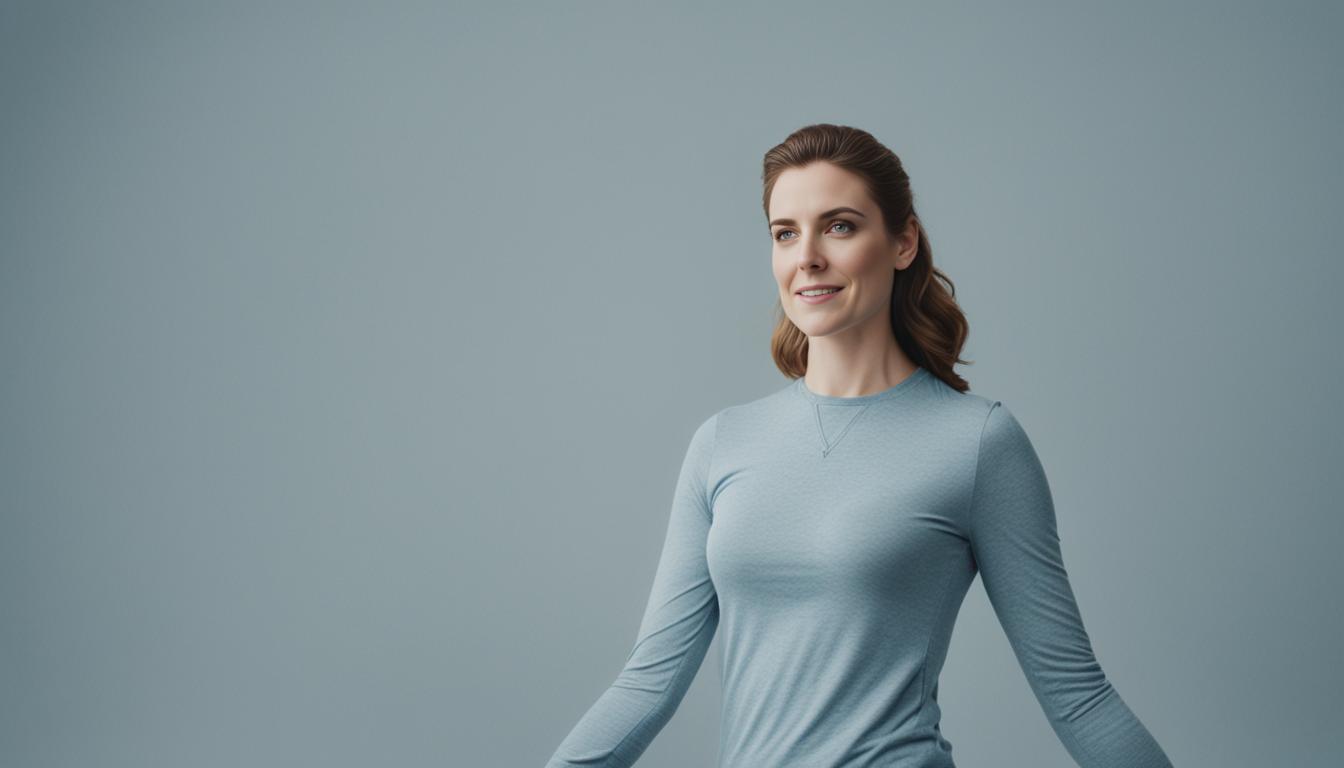As photographers, we all strive to capture the best possible portraits of our subjects. While technical skills and knowledge are crucial, there is another important aspect that can take our portraits to the next level: building rapport. By establishing a connection and directing our subjects effectively, we can create images that are not only technically flawless but also genuine and heartfelt.
In this article, we will explore the techniques and strategies for building rapport with our subjects in portrait photography. We will delve into the importance of creating a comfortable environment, communicating effectively, and understanding the power of body language. By mastering these skills, we can elevate our portrait photography and capture images that truly reflect the essence of our subjects.
Key Takeaways:
- Building rapport is essential for capturing authentic and stunning portraits.
- Creating a comfortable and engaging environment helps subjects feel at ease.
- Effective communication and clear guidance are crucial in directing subjects.
- Understanding body language enhances the impact of portrait photography.
- Building rapport not only improves our photography but also enhances the overall experience for our clients.
The Importance of Building Rapport in Portrait Photography
Building rapport with your subjects is crucial for creating exceptional portrait photography. Portrait photography is not just about technical skill; it’s about capturing the essence and personality of your subjects. When you establish a strong rapport, you can create a comfortable and engaging environment that allows your subjects to relax, be themselves, and trust your artistic vision.
When subjects feel at ease, they are more likely to open up and express their true selves during the session. This authenticity shines through in the resulting images, producing portraits that are compelling and emotionally captivating. By building rapport, you can capture images that go beyond the superficial and truly reflect the unique character and beauty of your subjects.
“Engaging and building rapport with your subjects is like unlocking a door to their soul. It allows you to capture their true essence and create portraits that resonate with the viewer.” – Jane Johnson, Professional Portrait Photographer
Creating a Comfortable and Engaging Environment
To build rapport with your subjects, it is essential to create an environment where they feel comfortable and engaged. Here are some tips to help you establish a connection:
- Start with a friendly introduction and warm conversation to put your subjects at ease
- Show genuine interest in their lives, hobbies, and passions
- Use positive language and provide encouragement throughout the session
- Offer clear instructions and guidance, helping them feel confident in their poses
- Take the time to listen and understand their vision or expectations for the shoot
- Keep the atmosphere light and enjoyable, using humor when appropriate
By following these techniques, you can create an environment where your subjects feel safe, valued, and encouraged to be themselves. This connection will translate into more authentic, captivating portraits that convey a genuine emotional connection.
The Power of Connection in Portrait Photography
Building rapport with your subjects goes beyond establishing a comfortable environment; it is about forging a connection. When you take the time to connect with your subjects on a deeper level, it allows you to capture their unique personality, emotions, and stories.
Here are some ways to foster a deeper connection during a portrait session:
- Ask open-ended questions to encourage meaningful conversations
- Show empathy, understanding, and respect for their experiences and emotions
- Make eye contact and actively listen to their stories and insights
- Express gratitude for their trust and willingness to be vulnerable in front of the camera
By establishing this connection, you create a collaborative partnership with your subjects, allowing you to capture images that truly reflect who they are. This approach sets the stage for remarkable portrait photography that resonates with both your subjects and the viewers.
The Impact of Building Rapport on Portraits
When building rapport with your subjects, you unlock their natural expressions and emotions, resulting in more captivating portraits. With a strong connection, your subjects will feel comfortable enough to let their guard down, allowing you to capture their true essence.
Authentic expressions, genuine smiles, and captivating emotions will fill your images, making them stand out from the rest. The trust and rapport you build will empower you to direct your subjects with ease, resulting in dynamic poses and natural interactions that showcase your subjects in the best light.
Investing time and effort into building rapport with your subjects is a surefire way to elevate your portrait photography to new heights. By creating a comfortable and engaging environment and forging a meaningful connection, you can capture images that not only showcase your technical skills but also convey the essence and beauty of your subjects.
| Benefits of Building Rapport in Portrait Photography |
|---|
| 1. Authentic and emotionally captivating portraits |
| 2. Subjects feel comfortable and at ease during the session |
| 3. Increased collaboration and trust between photographer and subject |
| 4. Dynamic and natural poses that reflect the subject’s personality |
| 5. Higher client satisfaction and likelihood of referrals |
Techniques for Building Rapport with Subjects
When it comes to portrait photography, one of the most crucial skills is the ability to build rapport with your subjects. Establishing a connection and creating a comfortable environment can make all the difference in capturing impactful and authentic portraits. Here are some effective techniques for building rapport:
- Use positive language: During the session, make use of positive and encouraging language to create a warm and friendly atmosphere. Compliment your subjects on their appearance, poses, or expressions, and provide positive feedback throughout the shoot.
- Explain the purpose: Provide clear explanations behind certain poses or techniques you are requesting from your subjects. Briefly explain how the specific pose or expression aligns with the overall vision and narrative of the portrait. This helps your subjects to understand the purpose behind their actions, making them feel more involved and invested in the process.
- Over-deliver on promises: Exceeding your client’s expectations goes a long way in building trust and rapport. Whether it’s by delivering the final images earlier than anticipated or providing additional edits or prints, going the extra mile demonstrates your commitment to delivering top-notch results and ensures your clients feel valued and appreciated.
Create a comfortable and engaging environment
Building rapport with your subjects is an essential aspect of portrait photography. By using positive language, explaining the purpose behind poses, and over-delivering on your promises, you can establish a connection that results in better portraits.
Incorporating these techniques into your portrait sessions will help you establish a genuine connection with your subjects, fostering trust and comfort. When your subjects feel at ease and connected to you, it will reflect in their expressions, resulting in more natural and captivating portraits.

Building rapport is a continuous process that requires practice and patience. Every subject is unique, so it’s important to adapt your approach accordingly. By combining technical skills with a friendly and engaging demeanor, you can elevate your portrait photography to new heights.
The Art of Directing Subjects in Portrait Photography
Directing subjects effectively is a crucial skill for portrait photographers. It goes beyond technical expertise and requires the ability to communicate clearly, offer guidance, and create an environment where your subjects feel comfortable expressing themselves. By mastering the art of directing, you can capture compelling and high-quality portraits that truly reflect the essence of your subjects.
Clear Communication:
When directing subjects during a portrait session, clear communication is key. Take the time to explain your vision, pose ideas, and desired expressions. Use positive language and provide specific instructions to ensure your subjects understand your expectations. Encourage open dialogue and actively listen to any suggestions or concerns.
Remember, effective communication is a two-way street. By establishing an open and collaborative environment, you can create a stronger connection with your subjects, leading to more authentic portraits.
Guidance and Direction:
As a portrait photographer, it’s important to provide guidance and direction to your subjects to capture their best angles and expressions. Use your expertise to guide them in posing, suggesting adjustments, and emphasizing their unique features. Remember to be patient and supportive throughout the process, allowing your subjects to feel more confident and relaxed.
Remember, directing subjects is not about controlling every aspect of the shoot, but rather guiding them to express themselves naturally. Encourage their creativity and individuality, and be open to unexpected moments that can result in stunning portraits.
Freedom of Expression:
Allowing your subjects the freedom to express themselves is crucial in capturing authentic and engaging portraits. Avoid being overly rigid in your direction, and instead, encourage spontaneity and creativity. Provide a range of options for poses and expressions, allowing your subjects to explore different styles and expressions that showcase their personality.
Remember, the goal is to capture genuine emotions and expressions. By giving your subjects the freedom to be themselves, you can create portraits that are not only visually stunning but also deeply personal and meaningful.
By mastering the art of directing subjects in portrait photography, you can elevate your craft and create portraits that truly resonate with viewers. The ability to communicate effectively, offer guidance, and allow for freedom of expression all contribute to building rapport and capturing better portraits.
Establishing a Connection with Your Subjects
Establishing a connection with your subjects is the foundation of capturing authentic and meaningful portraits. At the heart of every great photograph is a genuine connection between the photographer and the subject. By taking the time to get to know your subjects on a personal level, you can create a comfortable and trusting environment for your photo shoot.
Start by engaging in conversation and asking questions that will help you better understand your subjects. Show genuine interest in their stories, interests, and aspirations. This not only allows you to create a sense of rapport, but it also helps you tailor the portrait session to their unique personality and preferences.
During the photo shoot, make a conscious effort to establish a relaxed and friendly atmosphere. This can be achieved by maintaining open and positive body language, using humor to lighten the mood, and offering encouragement throughout the session.
Remember, effective communication plays a crucial role in establishing a connection with your subjects. Take the time to clearly explain your vision, provide guidance, and encourage their input and feedback. Collaboration and active participation from both you and your subjects can lead to more engaging and captivating portraits.
Building rapport and establishing a connection with your subjects is an ongoing process. It requires genuine interest, active listening, and the ability to adapt to different personalities and backgrounds. However, the effort you invest in building this connection will be reflected in the authenticity and emotional depth of your portraits.
Capturing Authenticity
“A photograph is a secret about a secret. The more it tells you, the less you know.” – Diane Arbus
When your subjects feel comfortable and valued, their true selves shine through in the photographs. The connection you establish with them allows you to capture their authenticity and emotions, resulting in portraits that are not just visually stunning but also deeply meaningful.
Remember, building a connection with your subjects is not just about technical skills and photography techniques. It’s about genuinely caring, being present in the moment, and creating a space where they feel seen and heard.
Key Takeaways:
- Take the time to get to know your subjects and show genuine interest in their stories.
- Create a relaxed and friendly atmosphere during the photo shoot.
- Communicate clearly, provide guidance, and encourage collaboration.
- Capture the authenticity of your subjects by building a strong connection.
Tips for Engaging Subjects in Portrait Sessions
Engaging subjects during a portrait session is essential for capturing more dynamic and expressive photos. By creating a friendly and relaxed atmosphere, using humor to put them at ease, and allowing them to have some control and input in the poses and positions, you can elicit genuine emotions and expressions that truly reflect their personality.
One effective tip is to establish a friendly and welcoming environment from the moment your subject arrives. Greet them with a warm smile and engage in casual conversation to help them feel comfortable and at ease. This will set the tone for the entire session and encourage a relaxed and natural rapport.
Using humor can also be a powerful tool to help subjects feel more relaxed and open. Crack a joke or make lighthearted comments to break the ice and create a positive and enjoyable atmosphere. Laughter can bring out genuine smiles and expressions, resulting in more authentic and captivating portraits.
“By creating a friendly and relaxed atmosphere, using humor to put them at ease, and allowing them to have some control and input in the poses and positions, you can elicit genuine emotions and expressions that truly reflect their personality.”
Another effective technique is to involve your subjects in the creative process. Ask for their opinions and encourage them to share their ideas and preferences for poses and locations. This not only makes them feel valued and heard but also gives them a sense of ownership and control, allowing them to relax and express themselves more naturally.
Throughout the session, provide clear and concise guidance to your subjects. Use positive language and offer constructive feedback to encourage them and boost their confidence. By directing them in a supportive and empowering manner, they will feel more encouraged to showcase their best selves in front of the camera.
Remember, engaging subjects involves creating an environment where they feel comfortable, valued, and empowered. By implementing these tips, you can build rapport, capture genuine emotions, and produce stunning portrait photographs that truly resonate with your subjects.

The Power of Communication in Directing Subjects
Effective communication is a fundamental aspect when it comes to directing subjects in the realm of portrait photography. As photographers, we have a vision in mind, and it is crucial to communicate it clearly and concisely to our subjects. By doing so, we can ensure that they understand our expectations and work together towards achieving the desired results.
Communication is key when it comes to building a strong rapport and creating a collaborative environment with our subjects. By using positive language and offering gentle guidance, we can establish a sense of trust and comfort. It is essential to actively listen to their input, ideas, and concerns, as this fosters a two-way communication flow throughout the photoshoot.
Specific feedback is vital in helping subjects understand their strengths and areas where improvement may be needed. By providing constructive criticism in a respectful and constructive manner, we can guide them towards better posing and expressions. This enables subjects to adapt and refine their actions, resulting in more impactful and visually stunning portraits.
Through effective communication, we as photographers become directors, guiding our subjects towards capturing their essence and true emotions in each photograph.
Moreover, incorporating active listening into our communication approach allows us to better understand our subjects’ preferences, personality, and desired outcome for the portrait session. By asking open-ended questions and genuinely showing interest, we demonstrate our dedication to creating a personalized experience tailored to their needs.
Flexibility in communication is also important. Each subject is unique, and adjusting our directing style to their individual comfort level and personality can yield remarkable results. Some subjects may prefer more detailed instructions, while others may thrive with minimal guidance and freedom to express themselves. By adapting our communication approach, we can ensure that each subject feels empowered and engaged throughout the photoshoot.
When it comes to directing subjects, clear and effective communication is a powerful tool that enhances the overall quality of our portraits. By establishing a strong rapport, actively listening, providing feedback, and adapting our communication style, we can guide our subjects towards capturing their true essence, resulting in breathtaking and emotionally compelling photographs.
Understanding the Importance of Body Language in Portrait Photography
When it comes to capturing stunning and impactful portraits, body language plays a crucial role. As a portrait photographer, it’s essential to understand how body language affects the overall composition and mood of an image, allowing you to direct your subjects effectively and achieve better results.
Body language can convey a wealth of information about a person’s emotions, personality, and state of mind. By paying attention to your subject’s body language, you can capture authentic and meaningful moments that truly reflect their essence.
One important aspect of body language in portrait photography is posture. The way your subjects hold themselves can communicate confidence, vulnerability, or any range of emotions. For example, a subject with relaxed and open body language may exude warmth and approachability, while someone with closed-off or stiff posture may convey a sense of unease.
Facial expressions are also a significant part of body language. A genuine smile, a thoughtful gaze, or a subtle furrowed brow can add depth and emotion to a portrait. As a photographer, you must guide your subjects to evoke the desired expressions, helping them relax and feel comfortable in front of the camera.
Another element to consider is the positioning of the hands and arms. The way a subject holds their hands can convey various emotions or intentions. Experiment with different hand placements to enhance the overall composition and add layers of meaning to your portraits.
Remember, effective communication and direction are key to capturing impactful portraits. By guiding your subjects through body language cues and providing gentle instructions, you can help them feel at ease, allowing their true personality to shine through in each photograph.
Understanding the power of body language in portrait photography allows you to create more engaging and expressive images. By capturing and directing your subjects’ body language effectively, you can elevate your portraits to a new level of artistry and emotional impact.
Building Rapport as a Professional Photographer
As professional photographers, we understand that building rapport with our subjects goes beyond capturing great photos. It is about delivering a positive experience and creating lasting connections. By employing certain techniques and embodying key qualities, we can establish trust, build strong relationships, and enhance our reputation in the industry.
The Power of Confidence and Respect
Confidence is essential when working with subjects. It helps them feel at ease and reassures them that they are in capable hands. By exuding confidence in our abilities, we can inspire trust and create a comfortable environment for our subjects to express themselves freely. Additionally, it is crucial to treat our subjects with respect and professionalism at all times. Respecting their boundaries, opinions, and individuality fosters a positive working relationship and allows for collaboration that yields outstanding results.
Attentiveness to Client Needs
As photographers, we should always prioritize the needs and desires of our clients. Paying close attention to their preferences, interests, and vision for the shoot demonstrates our commitment to creating a personalized experience. Taking the time to listen, ask thoughtful questions, and incorporate their input can lead to a more enjoyable and rewarding collaboration.
Creating a Comfortable Environment
A relaxed and inviting ambiance can make a significant difference in the quality of our portraits. We can achieve this by establishing open lines of communication, making small talk, and providing encouragement throughout the session. By creating a friendly and supportive atmosphere, we enable our subjects to feel comfortable and natural, resulting in more authentic and captivating photographs.
| Benefits of Building Rapport as a Professional Photographer | Key Techniques |
|---|---|
| 1. Establishing trust and comfort 2. Creating a positive working relationship 3. Enhancing client satisfaction 4. Generating repeat business and referrals |
1. Display confidence and respect 2. Be attentive to client needs 3. Create a comfortable environment 4. Maintain open lines of communication |
Mastering the art of building rapport as a professional photographer elevates not only the quality of our work but also the overall experience for our clients. By being confident, respectful, attentive, and creating a comfortable environment, we foster connections that transcend the camera, resulting in powerful and meaningful portraits that leave a lasting impression.
Conclusion
Building rapport and effectively directing subjects are paramount to capturing outstanding portrait photography. By implementing the tips and techniques we’ve discussed in this article, you can elevate your photography skills and create breathtaking portraits that truly capture the essence of your subjects. Remember that establishing a connection with your subjects is essential, as it helps them feel more comfortable and allows their true personality to shine through.
Throughout the photo shoot, prioritize creating a welcoming and engaging environment to foster a sense of ease and collaboration. Effective communication and clear direction will guide your subjects to strike the perfect poses and expressions, resulting in better portraits. Remember to actively listen to your subjects and incorporate their ideas and input. Making them feel valued and involved in the process will undoubtedly enhance the overall outcome of your portraits.
Lastly, keep exploring new photography techniques and refining your skills. Experiment with different lighting, angles, and backgrounds to add variety and creativity to your portraits. Stay up-to-date with the latest trends and advancements in portrait photography, and never stop learning and growing in your craft.
By honing your abilities in building rapport, directing subjects, and mastering essential photography techniques, you’ll be well on your way to producing remarkable portrait photography that leaves a lasting impression on both your subjects and your audience.
FAQ
Why is building rapport important in portrait photography?
Building rapport with your subjects creates a comfortable and engaging environment, resulting in more authentic and stunning images.
What techniques can help me build rapport with my subjects during a portrait session?
Some techniques include using positive language, explaining the purpose behind poses or techniques, and over-delivering on your promises to exceed client expectations.
How can I effectively direct subjects during a portrait session?
You can effectively direct subjects by using clear communication, offering guidance and direction, and giving them the freedom to express themselves.
How can I establish a connection with my subjects?
Take the time to get to know your subjects, ask questions, and show genuine interest to create a comfortable and trusting environment.
What are some tips for engaging subjects during a portrait session?
Create a friendly and relaxed atmosphere, use humor to put them at ease, and allow them to have control and input in the poses and positions.
How important is communication when directing subjects in portrait photography?
Effective communication is essential. Clearly explain your vision, provide gentle guidance, and give specific feedback to ensure your subjects understand your expectations.
How does body language impact portrait photography?
Understanding how body language affects the composition and mood of an image helps you direct subjects effectively and capture more impactful portraits.
Why is building rapport important for professional photographers?
Building rapport is not only about capturing great photos but also delivering a positive experience. It helps establish long-lasting relationships and a strong reputation in the industry.
How can building rapport and directing subjects improve my portrait photography?
By following the tips and techniques discussed in this article, you can elevate your photography and capture stunning, authentic portraits that reflect the personality of your subjects.
What are the key elements for building rapport in portrait photography?
When it comes to building rapport in portrait photography, essential portrait photography techniques play a crucial role. Establishing a connection with the subject, creating a comfortable environment, and giving clear directions are all essential for capturing authentic and compelling portraits. Mastering these techniques can elevate the overall quality of your portrait photography.
Source Links
- https://www.photoworkout.com/building-rapport-in-headshot-photography/
- https://www.photographytalk.com/photography-articles/2757-how-to-photography-7-tips-for-developing-an-excellent-rapport-with-portrait-subjects-and-models
- https://fstoppers.com/originals/importance-building-rapport-during-shoot-and-how-do-it-136579




